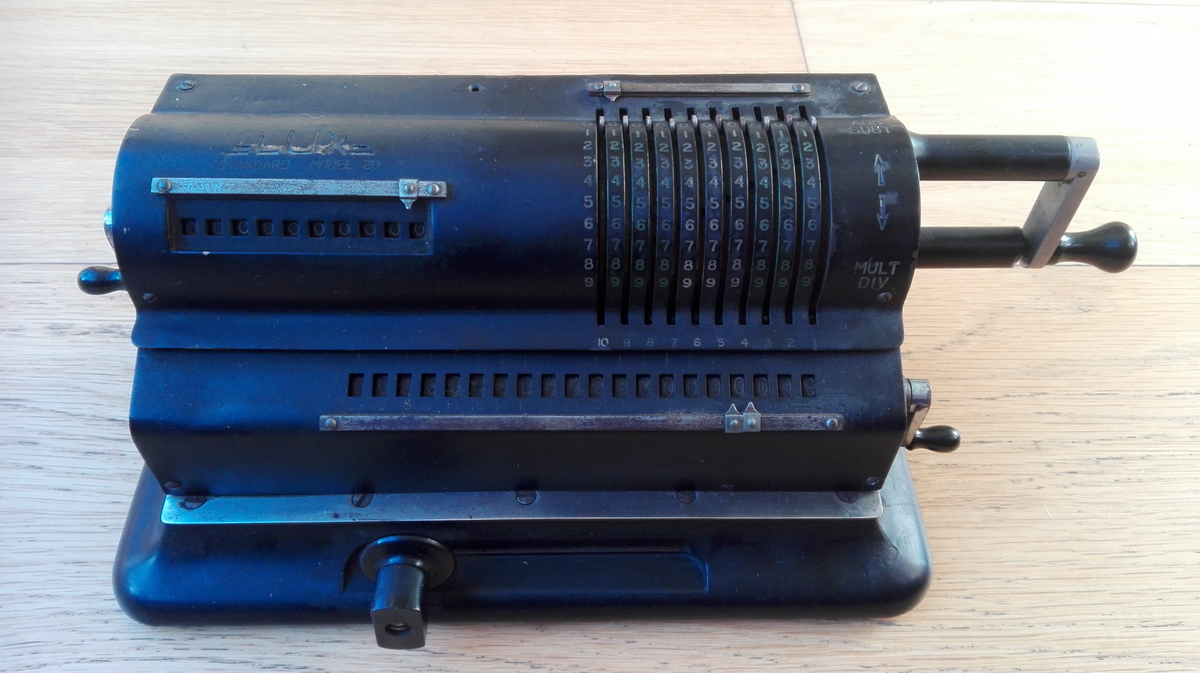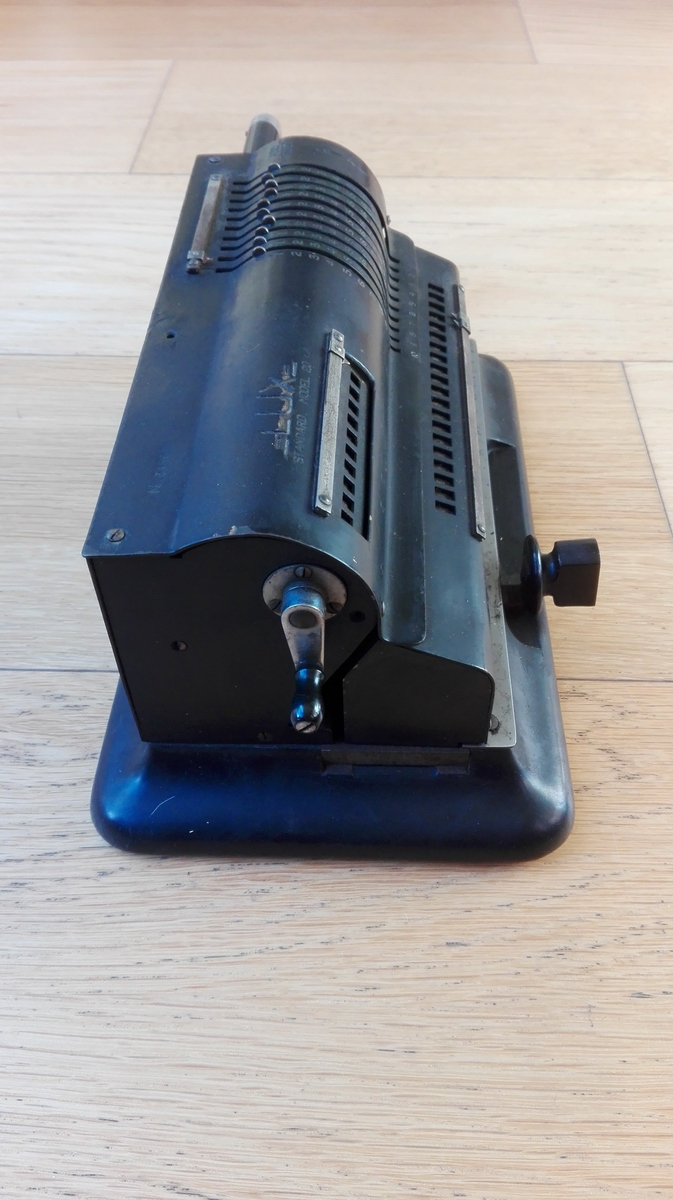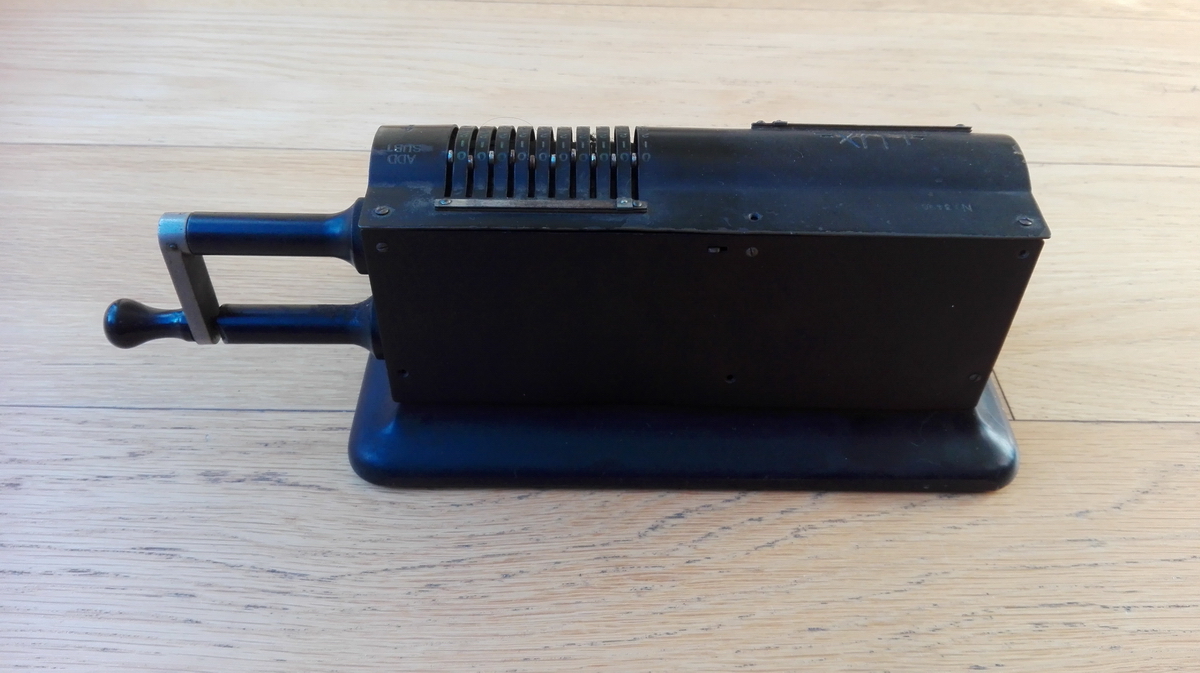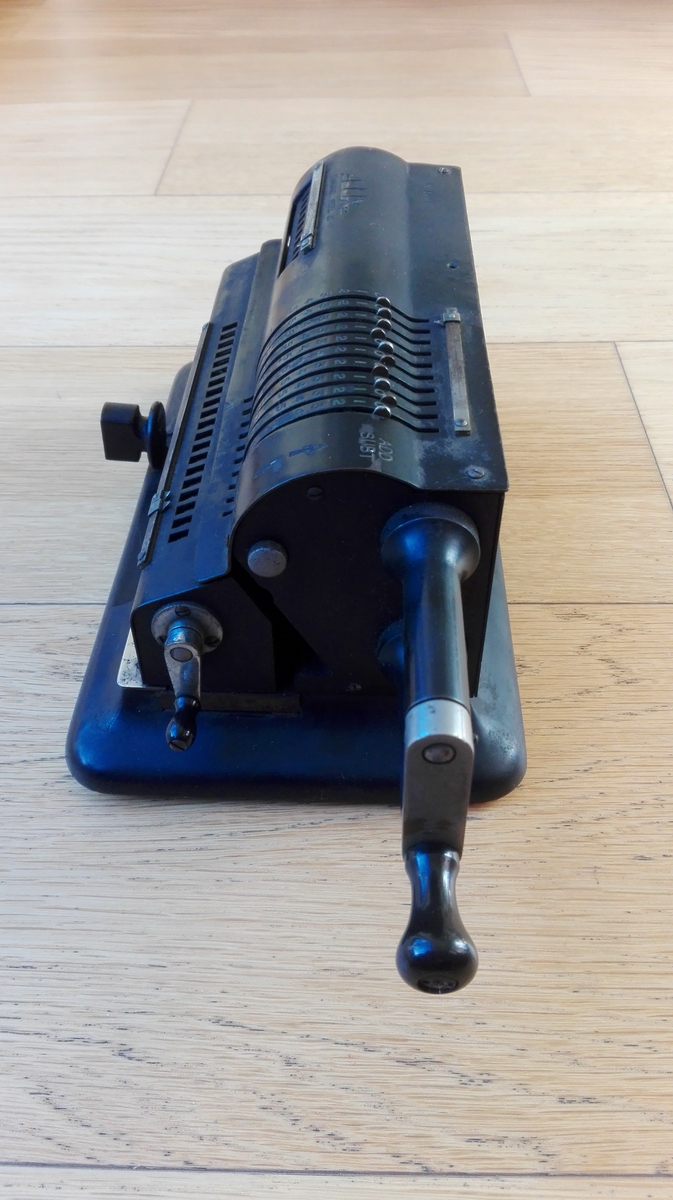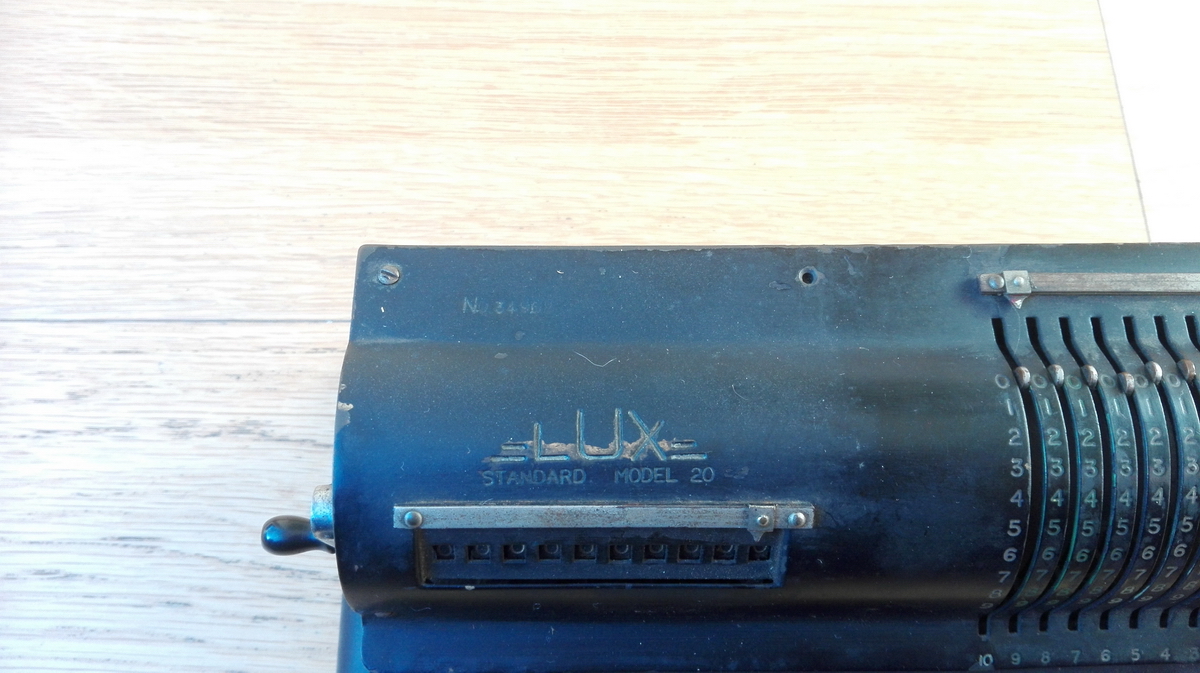_LUX_ Model 20
A real, real oddball of a machine. It looks like a mutated Odhner, but whoever designed it went through the whole process without copying anything from Odhner, because inside, it is completely different. The machine is Japanese, and its most outstanding feature is obviously that the counter register sits next to the pinwheel cylinder, in mirror-image Marchant XL style. In contrast with the Marchant XL though, there is no tens' carry in the revolution register.
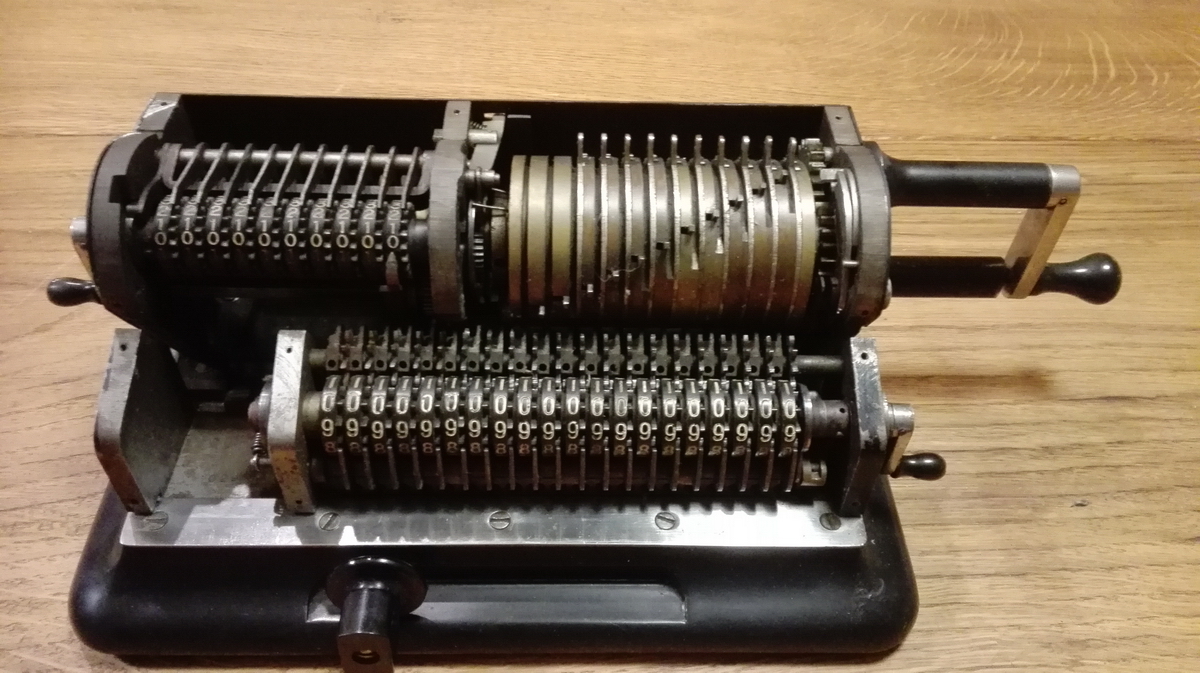
Both the result register in the carriage and the counter register have a clearing system which disengages the ratchet springs from the gears when clearing, so that when you start turning the handle, all the counter wheels twist and turn in all directions, only to line up at zero at the very end of the turn, right before the ratchet springs click back in place. As an advantage, resetting these registers does not require much force - again very Marchant like.
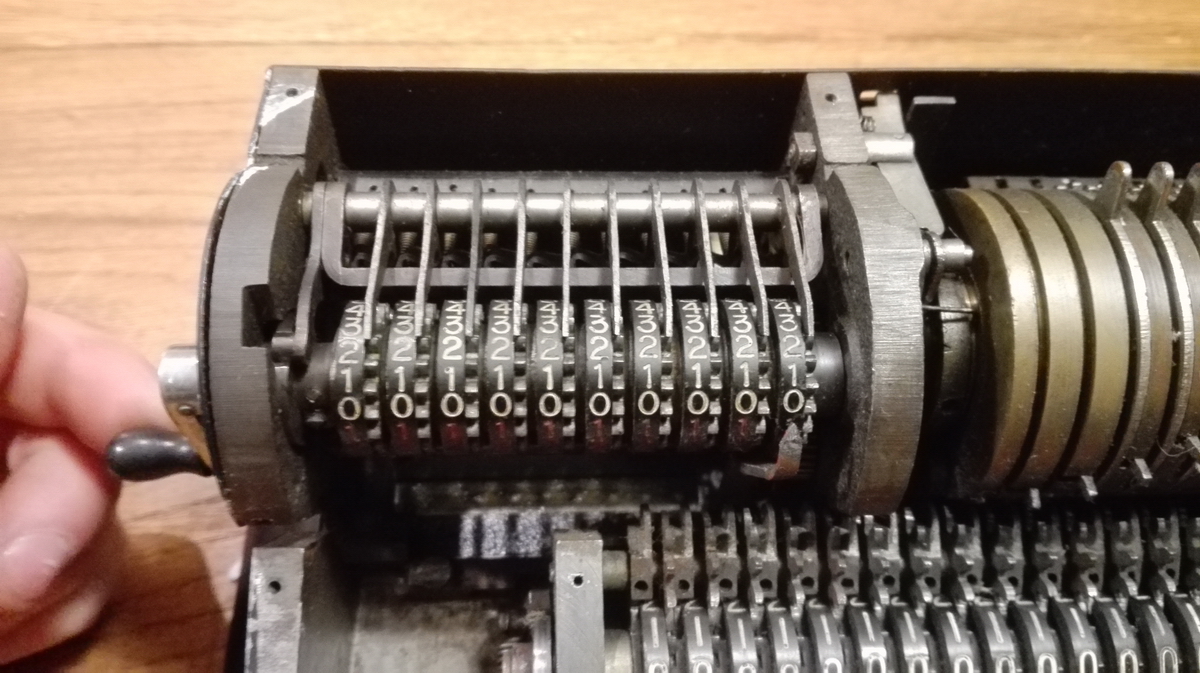
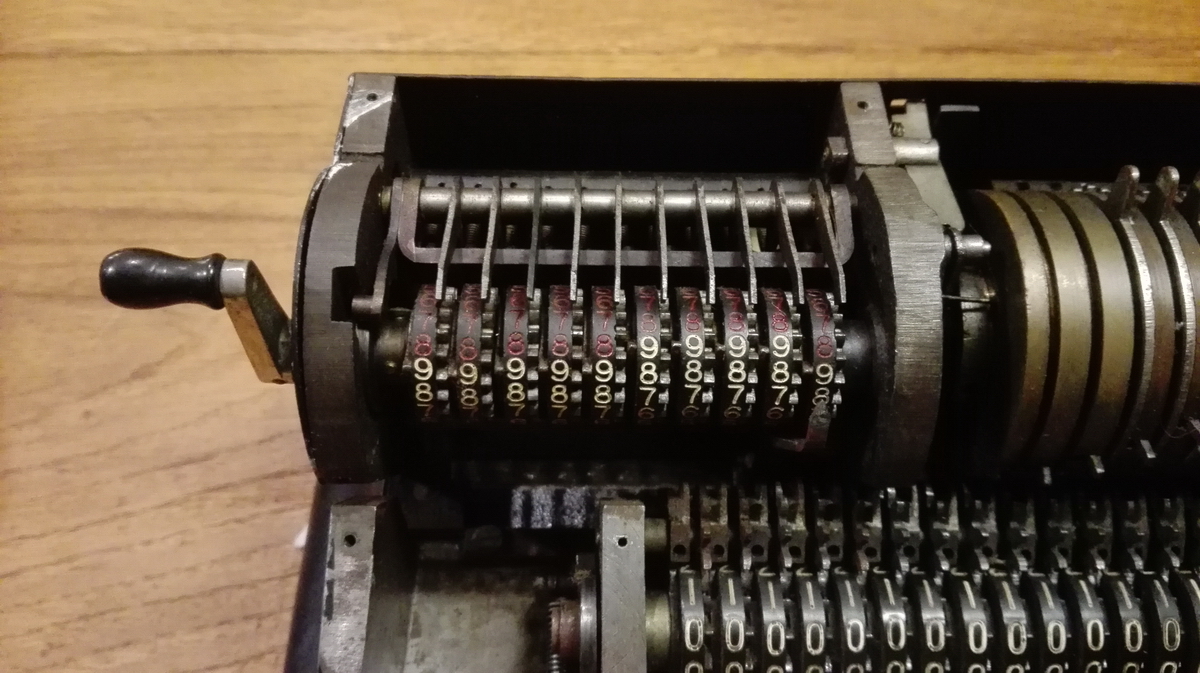
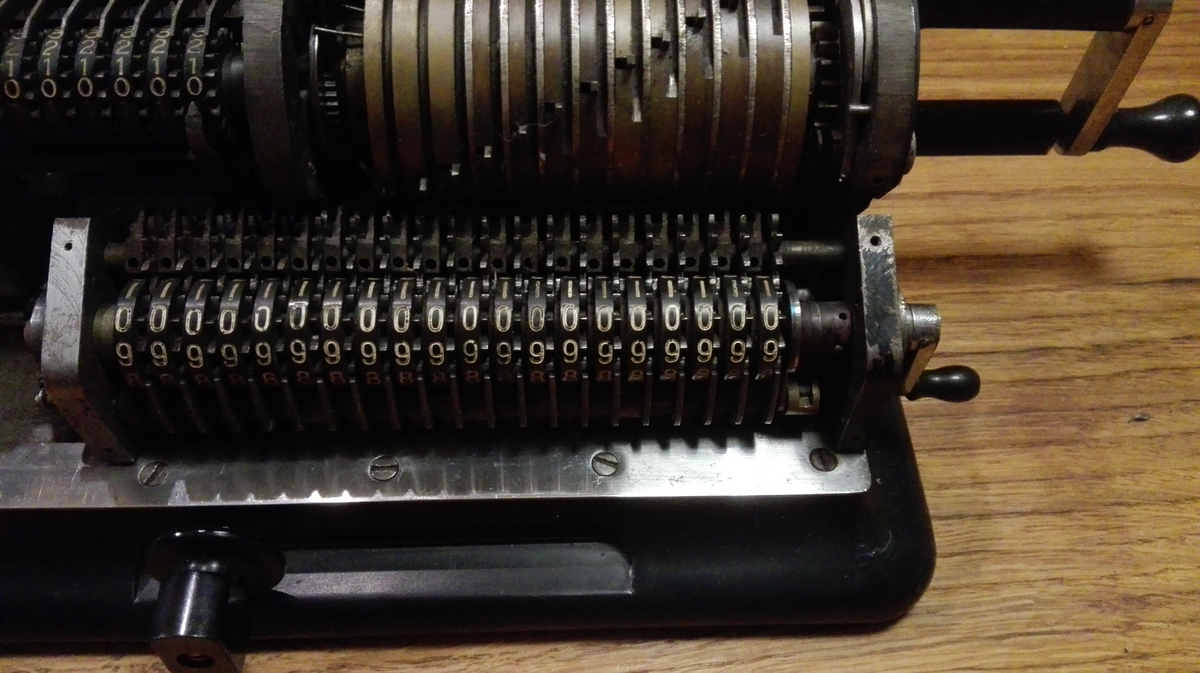
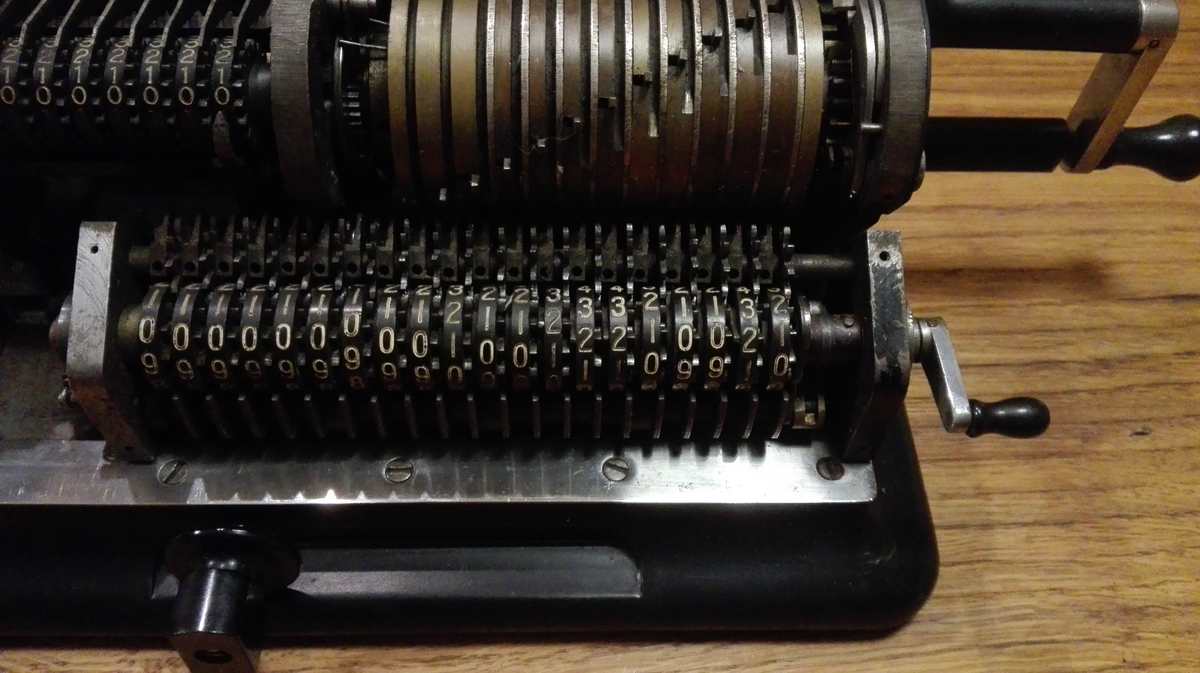
The pinwheel cylinder on this machine is almost incredibly light in operation as well. There is a reset mechanism incorporated, but it was either badly designed, or part of it is missing or broken, because currently, it does not do what it is supposed to do, and I see no way of making it work either. It might just be that the designer gave up on making it work.
The direction safety is also a hoot - it is located on the left side of the pinwheel cylinder, and provided by a tooth pointing down into a fine-toothed gear, as is usual for pinwheel machines. What is often done is to provide a hole into the top plate where the back of this part sticks out, so it can be unblocked if necessary. In this machine however, there is a tiny lever sticking out at the back of the machine. If you open the top, it becomes obvious that this engages with a ridge on the part with the tooth, where it hinges on its pin, and slides it over the pin to the right, out of engagement with the fine-toothed gear. If, however, you take off the back of the machine, you quickly find out that the only thing holding this lever in place is in fact the back plate of the machine - it just falls out, and the tooth slides right off its pin too. Very odd.
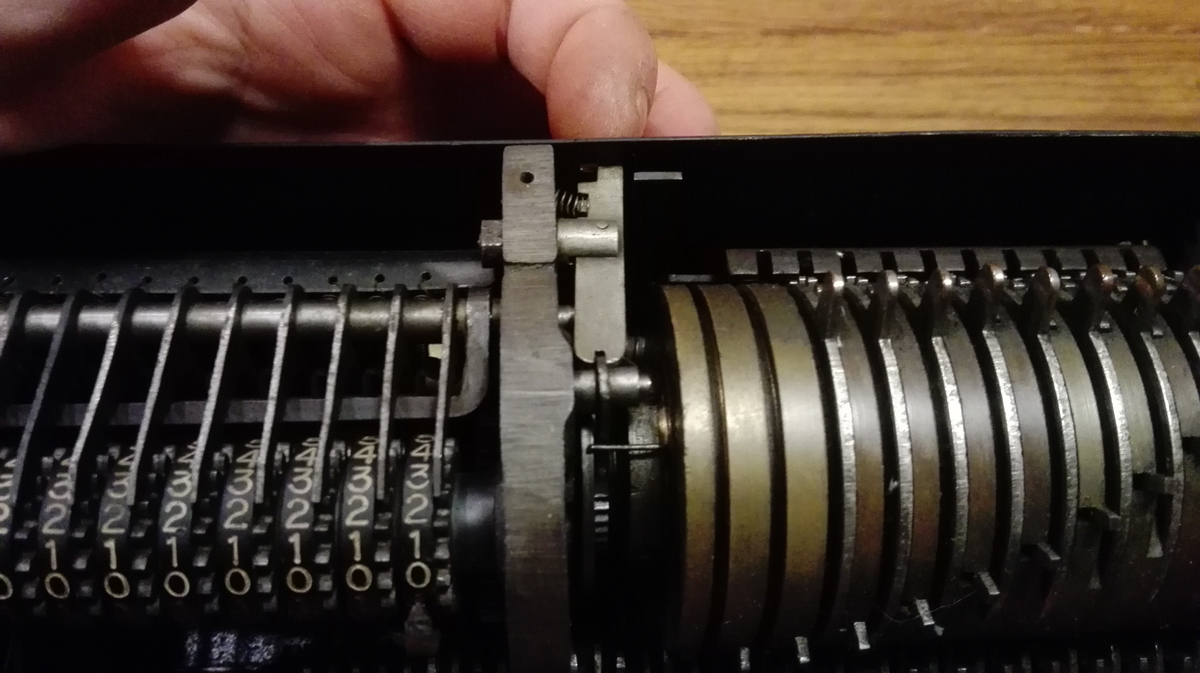
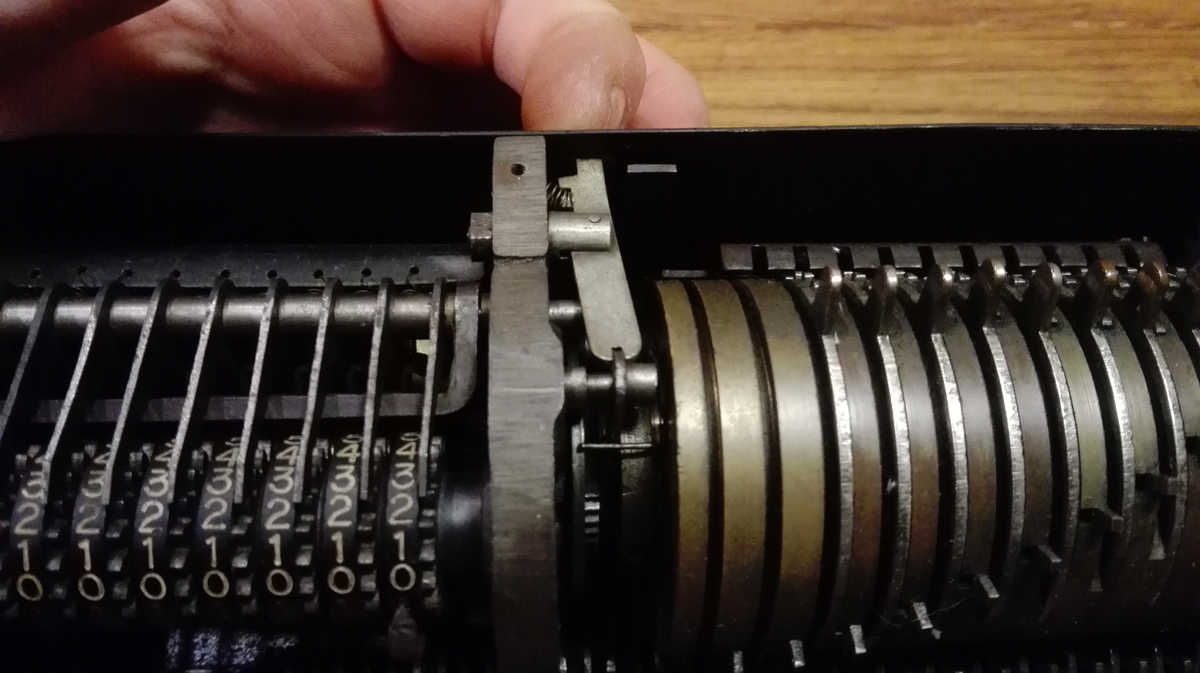
Another rather laughable thing is the serial number of the machine - 34962. This is, to the best of my knowledge, the only machine of its kind known to exist - it would be a bit strange if at least another 35000 of them would have been kicking around in Japan. Inside the machine, the stampings on the parts tell a different story. Every part is stamped with "029". That seems like a more sensible production range, judging from what is left today.
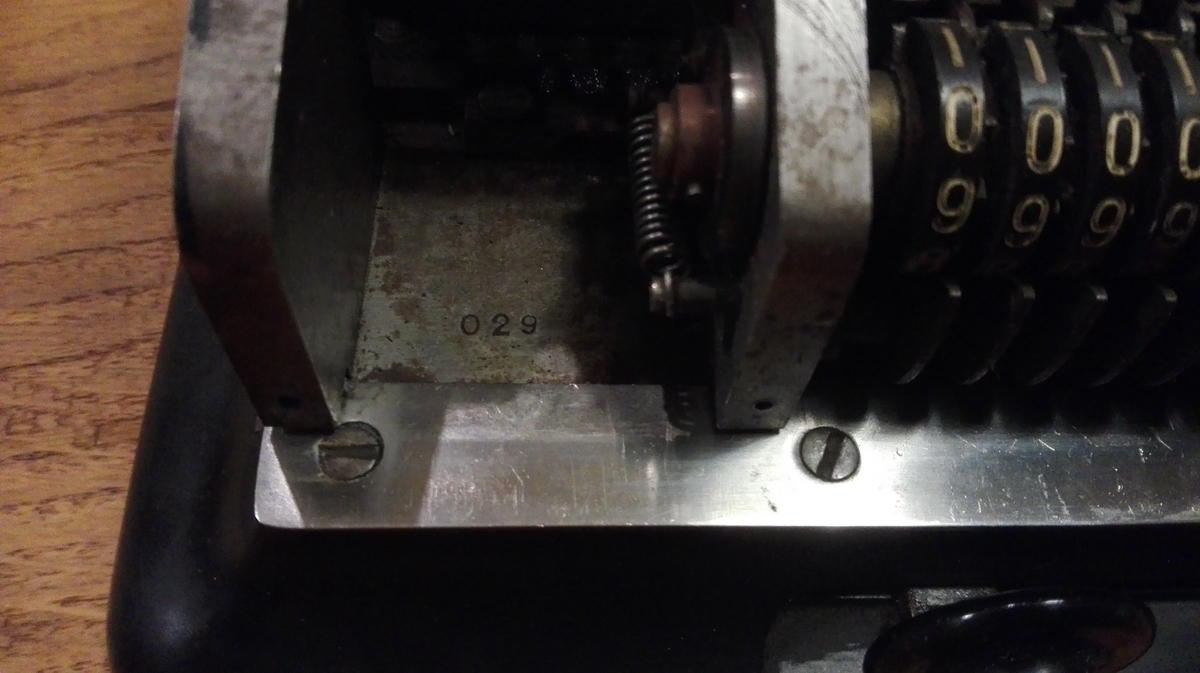
In any case, I'm quite happy to have it in the collection, it is a bit old-fashioned with the red numbers in the counter register, but it works well and surprisingly light. it still has to be cleaned up a bit and will take pride of place in the Japanese section.
